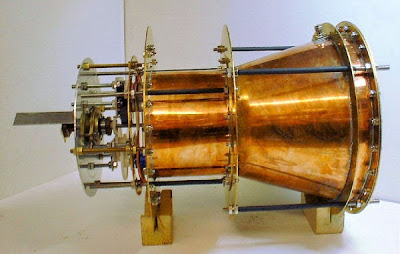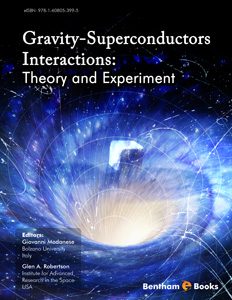As stated in NextBigFuture, a US scientist, Guido Fetta, has built his own propellant-less microwave thruster, and managed to persuade NASA to test it out. The test results were presented on July 30 at the 50th Joint Propulsion Conference in Cleveland, Ohio. Astonishingly enough, they are positive.
Numerical and Experimental Results for a Novel Propulsion Technology Requiring no On-Board Propellant
Guido P. Fetta, Cannae, LLC
Read More: http://arc.aiaa.org/doi/abs/10.2514/6.2014-3853
The NASA team based at the Johnson Space Centre gave its paper the title “Anomalous Thrust Production from an RF [radio frequency] Test Device Measured on a Low-Thrust Torsion Pendulum”. The five researchers spent six days setting up test equipment followed by two days of experiments with various configurations. These tests included using a “null drive” similar to the live version but modified so it would not work, and using a device which would produce the same load on the apparatus to establish whether the effect might be produced by some effect unrelated to the actual drive. They also turned the drive around the other way to check whether that had any effect.
Anomalous Thrust Production from an RF Test Device Measured on a Low-Thrust Torsion Pendulum
David A. Brady, Harold G. White, Paul March, James T. Lawrence, and Frank J. Davies
NASA Lyndon B. Johnson Space Center, Houston, Texas 77058
This paper describes the eight-day August 2013 test campaign designed to investigate and demonstrate viability of using classical magnetoplasmadynamics to obtain a propulsive momentum transfer via the quantum vacuum virtual plasma. This paper will not address the physics of the quantum vacuum plasma thruster, but instead will describe the test integration, test operations, and the results obtained from the test campaign.
Back to 2009
A Nextbigfuture review of emdrive in 2009
A link to the 14 page word document on the 2009 EMDrive research
Wired also has an article on the Emdrive
A connection to EHT is not suspected as a theoretical basis for this drive despite the reliance of both upon superconductors.


